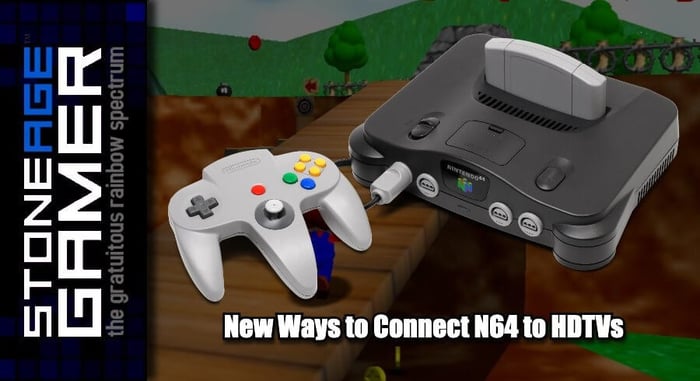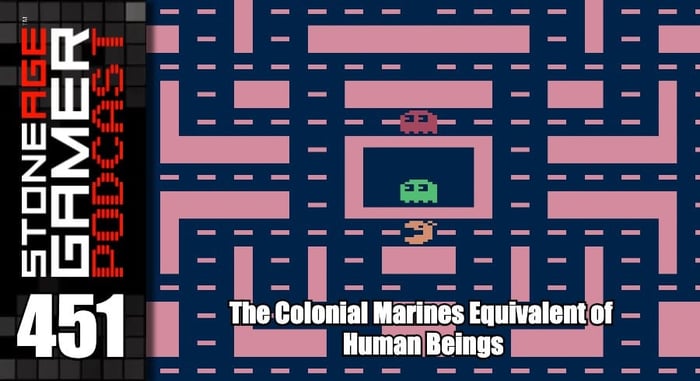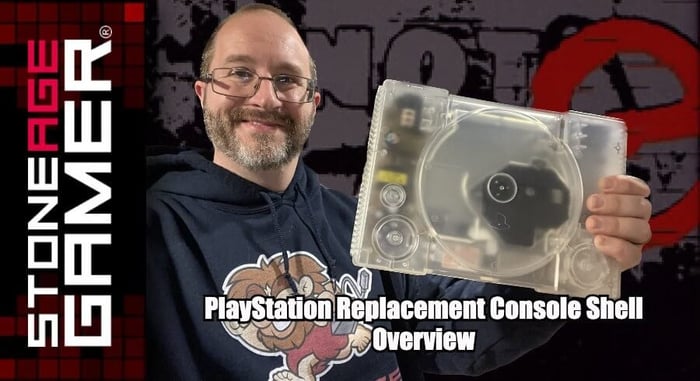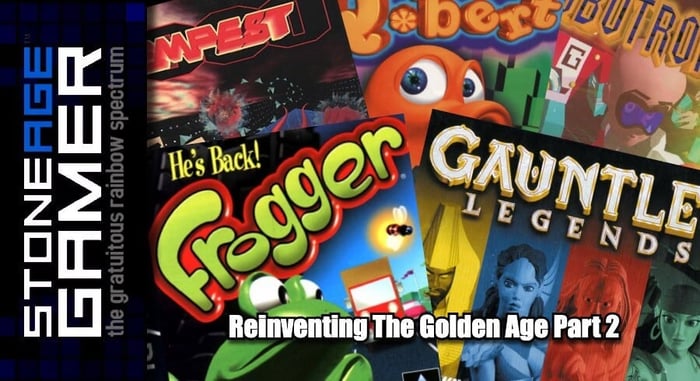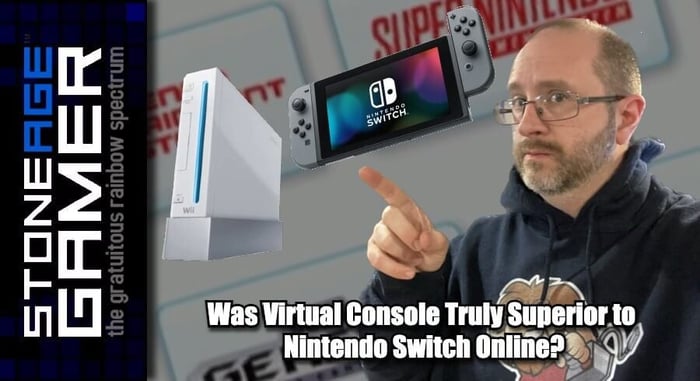
Was Virtual Console Truly Superior to Nintendo Switch Online?
Ever since the Switch launched, folks have been clamoring for a return of the Virtual Console. So much so, that there's a vocal sect of the gaming populace that firmly believes that things were truly better before the advent of Nintendo Switch Online. But were they really? Let's take a closer look.
Transcript of the video:
The Switch needs Virtual Console! Nintendo Switch Online is awful! Nintendo is anti-consumer! What a rip off! Things were so much better on the Wii.
Well, were they? I’ve seen this sentiment around a lot and I gotta say, I don’t think the Virtual Console was quite as good as people seem to remember it.
First off, let’s define what we’re talking about, just in case you aren’t familiar with the terminology. Let’s start with NSO. Nintendo’s current system for granting people access to their retro catalog is as part of their Nintendo Switch Online service, or NSO. For an annual fee, you are given access to a selection of retro games from various platforms. There’s an upgraded version of the service that gets you access to more platforms and certain in-game DLC as well.
The Virtual Console was Nintendo’s method of granting access to their back catalog on Wii, 3DS, and Wii U. Here, games were purchased for a one time fee on a game by game basis. Once you bought them, they were yours to play on that specific system.
So, what makes the Virtual Console better? Well, you can buy the games outright, right? That’s inherently better than infinitely renting them. But it’s a little bit more complex than that.
Virtual Console games are tied to your specific system. If you bought Super Mario Bros. on Wii Virtual Console, then upgraded to 3DS, you would need to purchase Super Mario Bros. again. And then again if you bought yourself a Wii U. Granted, with Wii U you were able to either transfer your Wii data to your new system and use your existing Virtual Console games in Wii mode, or you could pay a small fee to upgrade your Wii VC game to a Wii U VC game, which included different emulation and the addition of save states. OF course, this also depended on if your old game was even available on Wii U, which many Wii VC gams were not.
NSO works more like Netflix. As long as you’re signed up to the service, you have access to all of the games available on said service. The lack of ownership is a big drawback for some, but in the same way as not owning your favorite Netflix show is. NSO also has the theoretical advantage of being more future-proof. Where VC purchases didn’t carry from one platform to the next, NSO subscriptions could theoretically just carry over to Switch 2 or whatever it winds up being.
So next, lets’ talk about the price, and this is really where the whole Virtual console superiority thing falls falt for me personally. Virtual Console was a great way for me to discover games I hadn’t played before. In particular, I remember trying out the Turrican games on VC and thinking they were super cool, so I bought them all! I did this a lot, and most of the time I didn’t regret the purchase. However, there were lots of other games I wasn’t so sure about that I let get by me. There was no trying these games out. They were digital purchases that once made, that was that. The prices of these games made purchasing a stinker not as bad as it could have been, but these prices added up, especially if you’re the kind of person who likes playing lots of different games for small periods of time.
On the various VC platforms, NES games were $5, SNES games were $8, N64 games were $10, Game Boy games were $3, Game Boy Color games were $5, Game Boy Advance games were $7, and Sega Genesis games were $6. Of course the Virtual Console offered more platforms than these, but we’ll get to that in a bit. I mention these because these are all the platforms currently available through Nintendo Switch Online.
It’s also worth noting that not all games were priced the same. Occasionally NES games went for $6 if there was a license involved. Some N6 games went for as high as $12. These cases were uncommon, but they did exist. The prices I mentioned above were the standard though.
Nintendo Switch Online costs $20 a year. That gives you NES, SNES, Game Boy, and Game boy Color games. NSO with the expansion pack costs $50 a year, and that includes the previously mentioned platforms plus Nintendo 64, Sega Genesis, and Game Boy Advance games.
Currently at the time of this recording, on Nintendo Switch Online, there are 63 NES games, 55 SNES games, 22 N64 games, 5 Game Boy games, 4 Game Boy Color games, 6 Game Boy Advance games, and 36 Sega Genesis games. If we were to tally that all up and apply Virtual Console prices to them, owning the current library of games on Switch would cost you $1268. At $50 a year, it would take you 25 years of paying into the service to hit that point. And that doesn’t even take into account the family plan. If you’re the only person playing these games on Switch, the previous statement applies to you. But if you get the family plan, which allows up to 8 users to access the games and play them online, the cost only goes up to 79.99 a year, a cost that you can split up to 8 ways if you have friends or family who want in on the action.
Now, of course, the fact remains that in the world of Virtual Console, you wouldn’t necessarily be purchasing every one of the games that are on NSO, and in that case the VC is indeed cheaper. But the fact remains that if value is your chief concern, NSO is a solid deal.
This is compounded by the fact that the vast majority of the games themselves look and play better on Switch than they ever did on Virtual Console. In terms of basic visuals, especially NES games, things look sharper. Colors are more vibrant. You even have the option to run them in pixel perfect mode. The Wii Virtual Console stuff looks fantastic across the board on an old fashioned CRT, but the Wii U in particular has dreadful NES emulation with washed out colors and fuzzy visuals. Yes, some N64 games have their issues on the Switch, but those issues have either been patched out or have been MASSIVELY overblown. Other N64 games like PilotWings look amazing on Switch, so that particular console is more or less a wash.
The games run better, too. Again, if you were running your Wii on a CRT this was never an issue back then, but if you’ve ever tried to beat Punch Out on your 3DS or Wii U, you know there’s noticeable input lag present. It still exists on NSO, but it’s considerably less prevalent. I’ve personally been able to finish Punch Out on switch, a feat I’ve never been able to do on anything other than a CRT. Then there’s the emulation features. Besides the visual options like pixel perfect mode, all games have save states, which is something the wii Virtual Console didn’t have, and the 3DS and Wii U only have in limited capacity. All platforms except Nintendo 64 also offer built-in rewind functionality, which can be an extremely useful tool, and make some of the harder old school games way more manageable.
On teh other hand, the game selection used to be much more diverse. The selections on NSO are excellent for the most part, with most of the heavy hitters available now or on the way for these respective systems. There were some greats that just aren’t there though. Sim City for SNES used to be on Wii Virtual Console. Ninja Gaiden is on NSO, but Ninja Gaiden 2 and 3 are not. Ogre Battle 64 was on Wii U, but no luck on NSIO so far. Other stuff like the Mega MAns, Castlevanias, Ninja Turtles, these games aren’t on NSO either, but they’re available to purchase in various collections, so that’s not really a point against NSO here.
But the real drawback is the number of systems represented. NSO has NES, Super NES, N64, Game Boy, GBC, GBA, and Genesis. The various Virtual Console services had all of those plus, Sega Master System, Game Gear, Nintendo DS, Nintendo Wii, TurboGrafx-16, Turbo CD, Neo Geo, Arcade, Commodore 64, and outside the US, even MSX games. I can understand the lack of Wii games because it seems like Wii and GameCube games are just getting the remaster release treatment, which is a whole other conversation, but whatever. It is what it is. And I can understand the DS stuff not being there due to the nature of the system. The rest of those platforms though, that stinks to not have them around anymore.
Are those missing libraries enough to justify the rose tinted postulations about how much better the Virtual Console was than NSO? I don’t personally think so. It isn’t perfect, but I think the online subscription model really works here, especially if this is the kind of thing they can keep up and running long term.
One of the worst things about Virtual Console was having to start over with each new platform. Sure, y0ou could upgrade your Wii VC releases on Wii U, but only if and when those games made their way to the Wii U. And that could take months! Nintendo is still taking the drip feed approach to NSO, but thsi kind of service seems like it’s been designed to be a little more future proof. Like the existing service could just carry over to whatever Nintendo’s next platform is. Sure some games might not make the transition, but movies and shows leave streaming services every month. Sometimes they come back too, so who knows?


